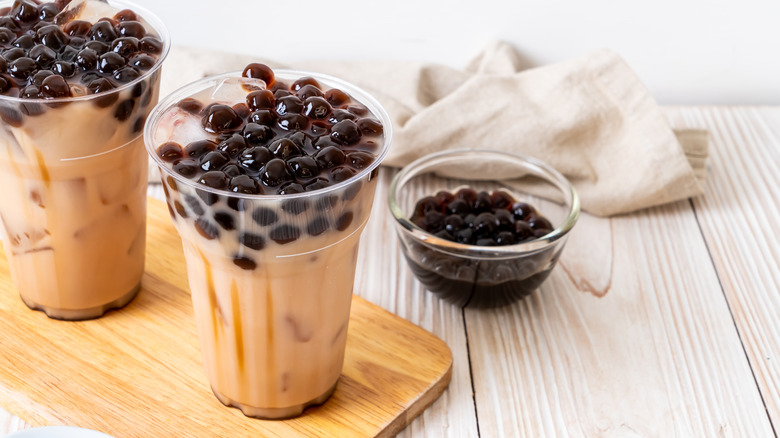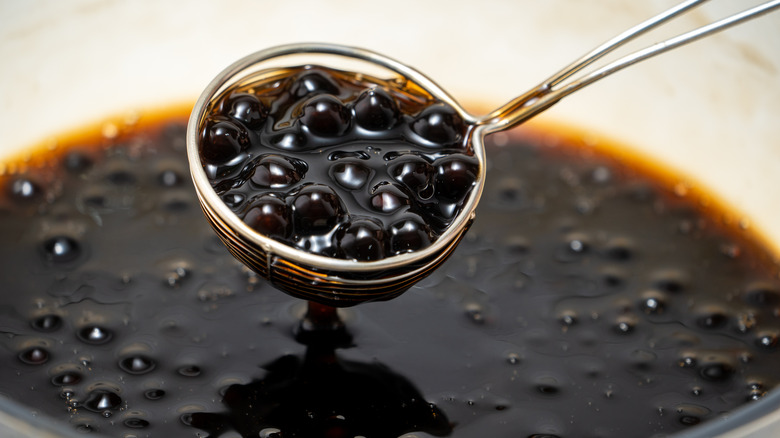Signs That Your Boba Tea Tapioca Is Overcooked
The boba, or tapioca pearl, of a boba tea should be gummy like, well, a gummy bear. If their texture squelches under your chomps or is so soft that all the orbs merge together, whoever made them overcooked the starch. If they crunch, the cook undercooked them. The balance between these two extremes results in what Food & Wine reports as QQ, the Chinese word for the perfect consistency of a properly cooked tapioca pearl.
The Boba Social explains that the reason such mistakes hold an inordinate amount of effect over the boba's outcome is that the entire production process consists of boiling and chilling the starchy spheroids. This must be done in a specific manner — they stress that the chilling cannot occur in the refrigerator. Placing the still-heated balls in the fridge will result in a mushed blob of tapioca. Rather, you should dunk the balls in cold water, as you would with other jelly foods. This stops the cooking process in a more efficient manner.
How to make your own boba
Perhaps you are tired of placing yourself at the mercy of incompetent boba boilers. If so, you could easily make them at home.
Writing for Food Network, Taipei-based journalist Clarissa Wei talked with Chiu Si-Chuan, the owner of southern Taiwanese dessert shop A Chuan Homemade Tapioca, about how to make one's own boba. To cook the pearls, all you have to do is boil them in a pot filled with water at a ratio of 5:1 to keep the boba apart. Then, cover and turn the heat to low, stirring regularly. Once the balls become completely translucent, strain, chill, and place them in warm sugar water. After all this, they should be eaten within a day or so of cooking.
The instructions assume you are using premade balls. But if you want to go all the way and create the entire experience at home, Cooking in Chinglish supplies an ingredient list. You need Taiwanese brown sugar, which has a unique aroma and taste, and tapioca flour, which is also known as tapioca starch. You then combine them, make a dough, then divide the dough into smaller balls. Afterwards, it's just a matter of boiling and chilling. If you can't get your hands on Taiwanese brown sugar, The Boba Social seems happy enough with brown sugar and honey to taste. It won't have the authentic smack of Cooking in Chinglish's recipe, but it won't render the dessert inedible either.

